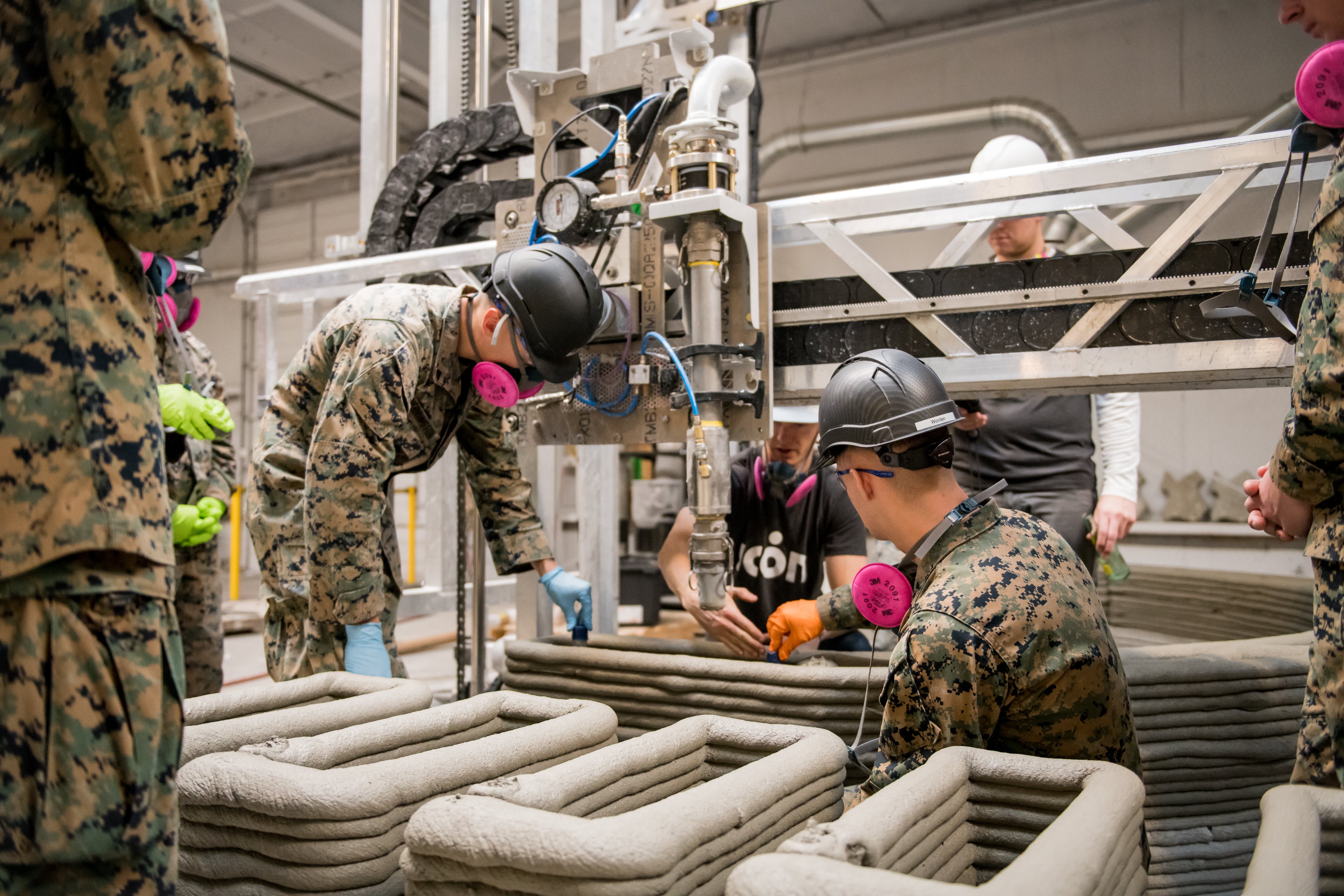Texas-based construction firm ICON has partnered with the U.S. government-backed Defense Innovation Unit (DIU), to demonstrate the military applications of 3D printing at the Camp Pendleton Marine base.
Working with the DIU, ICON trained a crew of eight Marines to use its concrete 3D printers. Despite their limited engineering experience, the troops managed to print a vehicle hide structure from scratch in just 36 hours. Following the successful demonstration, the technology could now be adopted across the U.S. Armed Forces, with the aim of supporting its military operations around the world.
“There are commercial technologies out there that provide one area of excellence in robotic building, but few that tie all the necessary aspects together in a way that makes construction instantly accessible to the novice,” said Jeremiah Diacogiannis, DIU program manager and U.S. Navy Lieutenant.
“The design of new structures, from shelters to bridges, can be done in less time and executed by a robotics system at the push of a button.”
ICON’s 3D printed vehicle hide structure
Over the last year, ICON has been working with the DIU to develop new military applications for a range of commercial additive manufacturing technologies. The program has seen ICON, the DIU, and the U.S. Marines Corps (USMC) experiment with 3D robotics, modeling software, and advanced materials to build various prototype structures.
As part of the project, eight Marines were trained to use ICON’s 3800 pound Vulcan 3D printer, including its operating software and material delivery subsystems. The aim of the session was to ready the troops for a field demonstration, in which they would build potentially important structures for future army expeditions.
Following their crash course in 3D printing, the Marines were tasked with building a vehicle hide structure composed of a series of concrete arches. With just a few hours of field training under their belts, the soldiers managed to operate the equipment from the start to finish, with ICON’s team only present in a supervisory capacity.
The goal of the project was to complete the printing process within 40-48 hours. Some time had been set aside for troubleshooting and getting the Marines up to speed, but the Marines managed to complete the build within just 36 hours. Although an upgrade to the printer’s material delivery system did accelerate the process, the Marines were also able to quickly grasp the basics of operating ICON’s 3D printer.
Using a proprietary cement-based material called Lavacrete, the Marines built four individual arches, which were later connected to create a vehicle hide structure measuring 26’ length x 13’ width x 15’ height. Having proved that the technology could be adopted and applied by relative newcomers, ICON’s 3D printing technology could now be used in a host of U.S. military applications in future.
“This marked the first time non-ICON employees were the primary operators of our equipment and they did an incredible job printing the Vehicle Hide Structure,” concluded Michael Harper, Director of Field Operations for ICON. “After getting a glimpse of what 3D printing can accomplish, the Marines had great ideas for other applications of this technology, and we can’t wait to assist in making those ideas become a reality.”

ICON’s concrete 3D printing technology
ICON has a track record of using its Vulcan additive manufacturing technology to produce concrete structures. In 2018, the company reportedly 3D printed a house in Austin, Texas, for less than $4,000, taking just 48 hours to do so. Recognizing the potential in ICON’s 3D printing technique, venture capital firm Oakhouse Partners led a $9 million investment round held later that year.
The company also established a partnership with New Story, a non-profit organization fighting homelessness, to 3D print houses in Latin America. Working together, the organizations designed, planned, and built what is said to be the “world’s first 3D printed community”. The partners continued their collaboration in January 2020 by fabricating low-cost housing for local families in Mexico that were living in extreme poverty.
You can now nominate for the 2020 3D Printing Industry Awards. Cast your vote to help decide this year’s winners.
To stay up to date with the latest 3D printing news, don’t forget to subscribe to the 3D Printing Industry newsletter or follow us on Twitter or liking our page on Facebook.
Looking for a job in the additive manufacturing industry? Visit 3D Printing Jobs for a selection of roles in the industry.
Featured image shows the ICON team and US marines’ 3D printed concrete vehicle hide structure. Photo via ICON.


